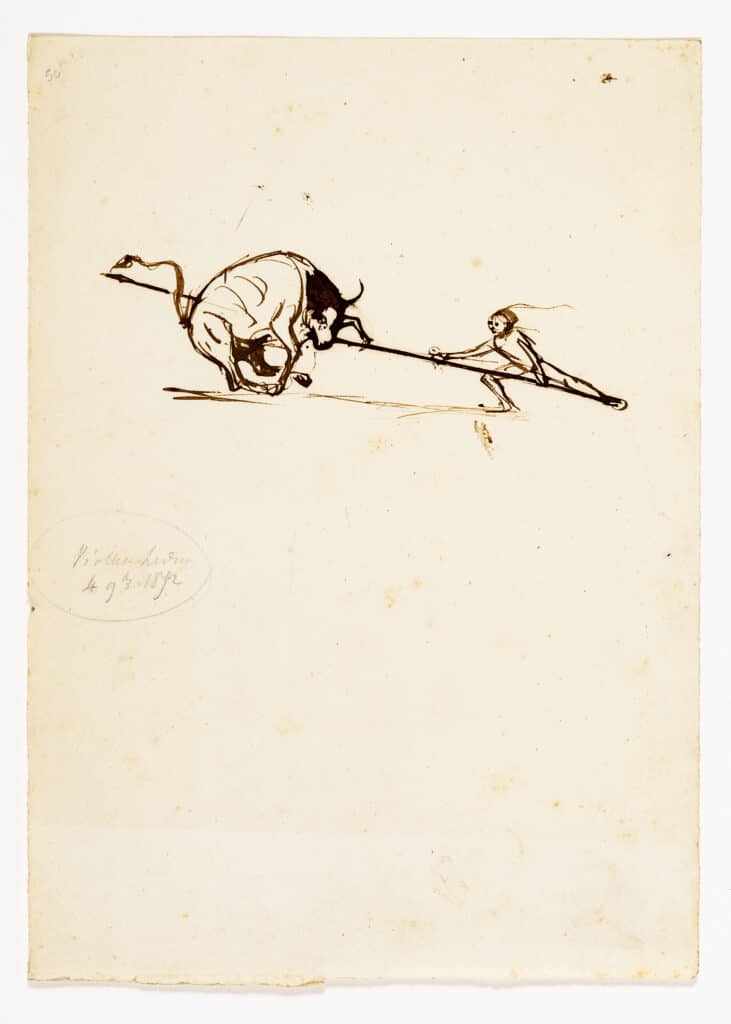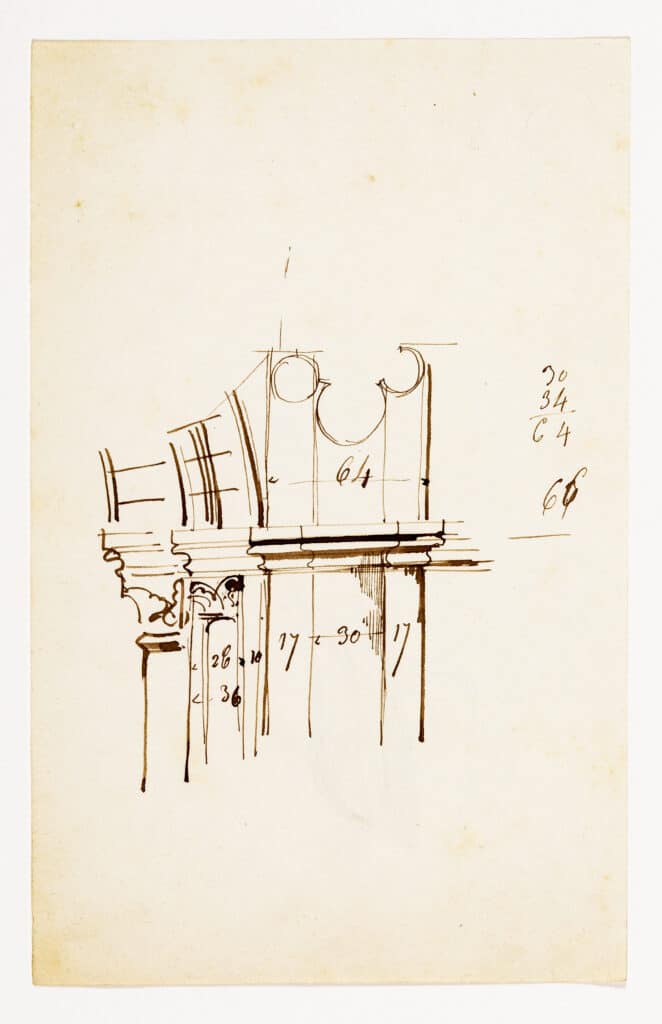The Architect and the Matador


On one sheet, a matador;
on the other, a design,
with measurements for a cathedral pier.
What unites these drawings
is provenance:
both, apparently, executed
by the architect
Eugène Viollet-le-Duc
in meetings.
As Viollet-le-Duc’s mind wandered
from doodle to design,
my attention,
beholding the drawings,
is drawn between the two sheets;
drawn, by the insistently connective impulse
of looking,
into associations.
Between architect and matador,
there is a choreographic kinship.
A shared tendency toward spectacles
of improbable precision,
which all boils down to decisions
about which lines to take
and which lines not to take.
I wonder how many architects
have harboured dreams of becoming matadors –
If there’s a trend.
And I wonder how many matadors,
killing bulls for show,
are, thereby, sublimating
childhood dreams of becoming architects.
I imagine a matador,
with a sweaty brow,
lingering in the empty plaza,
looking forlornly at the lines
he has made in the sand.
The matador projects his body
into a spear
with which he lances the bull.
Since it is drawn with such
sinuousness, such quick care –
note, for example,
the muscular ripples on the bull’s side –
it is hard to imagine that the meeting
wasn’t boring.
As I trace and re-trace
the line of the spear,
a symbolic interpretation
keeps presenting itself:
the bull
is the chaos
of brute, lumbering nature,
mastered here by the paralysing jab –
the clean, straight line –
of the pencil.
___________________
The linear satisfaction
of the matador
squarely dispatching the bull
is not unlike the
mathematical satisfaction
of Viollet-le-Duc’s pier design.
The jab of the spear
has much in common
with the repeated
downward stroke
of the two number sevens:
the repetition of a quick,
triumphal flourish,
marking and certifying
the attainment of balance.
Balance
is the word.
The sheet of paper,
a site of improvisation,
gives way to
a rhythmic interplay
between blank space
and measured
lineation. And both these drawings
offer sharp testimony
of an inner
matador sensibility:
a way of not occupying space,
by making lines
through it.
Thomas Gould is a Leverhulme Early Career Fellow in Literature at the University of East Anglia.
This text was entered into the 2020 Drawing Matter Writing Prize. Click here to read the winning texts and more writing that was particularly enjoyed by the prize judges.
